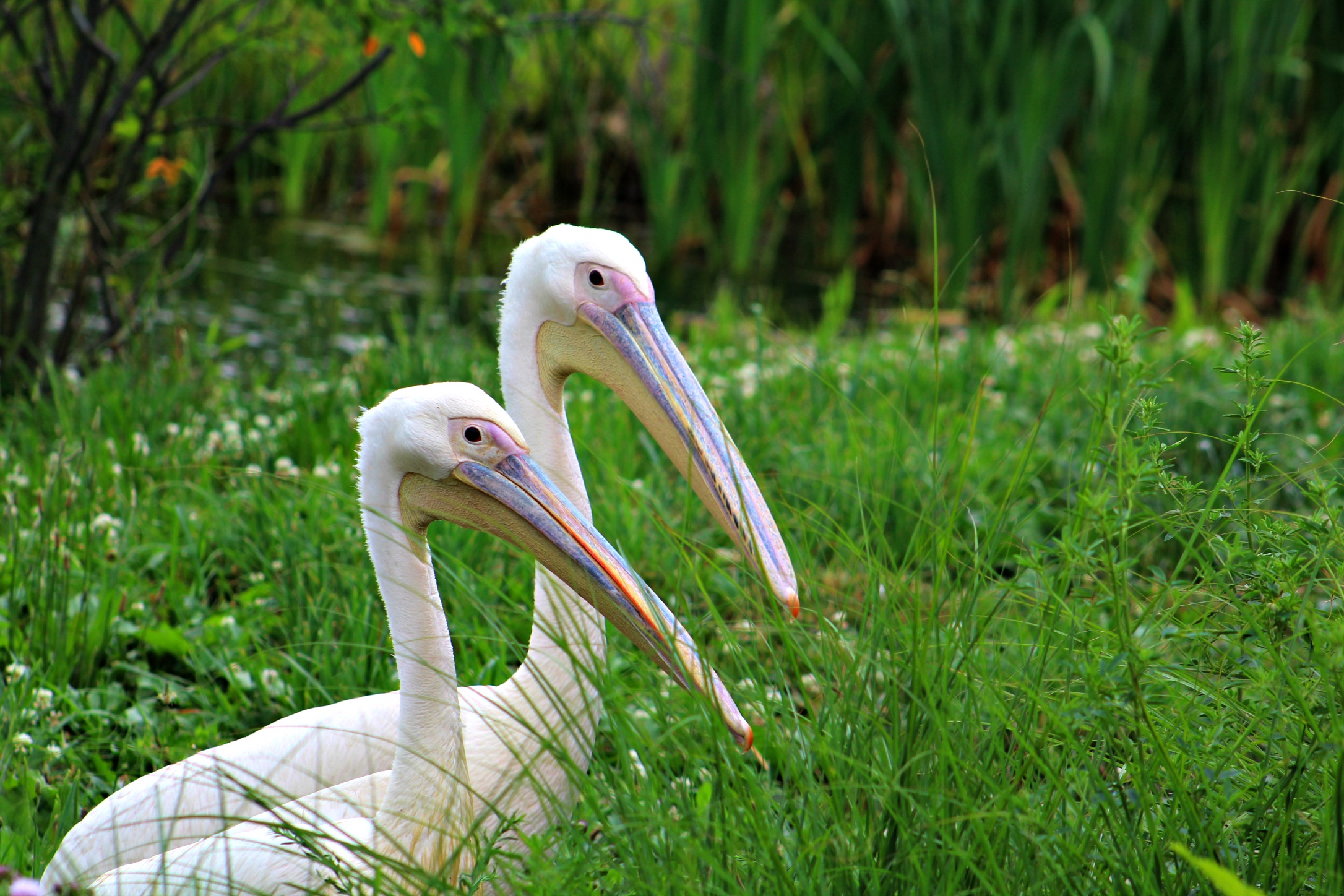The great white pelicans at the Fort Wayne Zoo are enrolled in the Species Survival Plan (SSP). SSP is a program implemented by the Association of Zoos and Aquariums (AZA) to help ensure a genetically viable population exists.
I LIVE IN AFRICA
The great white pelican is native to Africa and can be found living in shallow swamp areas. This species of bird can be found as far south as Cape Town, South Africa.
I AM A CARNIVORE
A great white pelican’s diet consists mainly of fish, as well as some small invertebrates.
GREAT WHITE PELICANS ARE SOCIAL
Great white pelicans will often live, feed, and fly in large groups called pods, sometimes with hundreds of pelican pairs.
BIG APPETITE, LITTLE CHICK
Each pelican chick eats approximately 150 pounds of fish before it can search for food on its own. A week or two after hatching, a chick can crawl, but still not lift their heavy beaks. After another week, this species can walk and swim. They naturally run and flap their wings as they get older but cannot fly until nine or ten weeks old.

